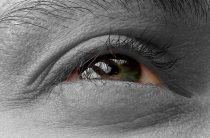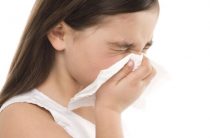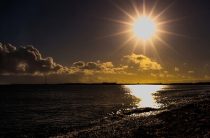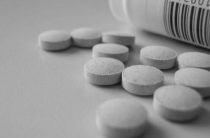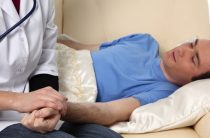Allergic rashes are one of the earliest and most common symptoms of hypersensitivity to foreign substances. However, such skin manifestations do not always indicate the presence of an allergy. They can be a sign of a number of other diseases. It is important to correctly establish the causes of rashes by analyzing their shape, size and color. How to do it right? What is the most effective treatment?
Types of allergic rash
Despite the fact that allergy research has been actively conducted in the country since 1906, to date, there is no specific data on what exactly causes it. In people, due to intolerance to certain substances, characteristic symptoms appear, including itching, runny nose, swelling, tearing. At the same time, allergic rashes of several types appear on the skin in children and adults.
Hives
It can manifest itself on the skin against the background of exposure to various irritants. Often it is provoked by insect bites or contact with certain plants (for example, nettles), jellyfish burns. In the form of hives in children and already in adulthood, a reaction to food is manifested - citrus fruits, chocolate, strawberries, eggs, fish, mushrooms and many others.
Attention: Rashes on the body and face in the form of urticaria may be a symptom of drug intolerance. If this is the reason, then further treatment should be agreed with a specialist.
Also, urticaria can occur under the influence of a number of mechanical factors. Among them, the influence of sunlight, high or low temperatures, friction. Skin reactions of an allergic nature are the result of toxins entering the human body. It is important to establish the causes of this symptom as soon as possible in order to eliminate it.
Urticaria is characterized by the formation of numerous pink blisters on the body. They quickly spread over the surface of the skin, appearing suddenly. Such rashes occur due to acute limited swelling of the skin, against which the permeability of the smallest vessels, the capillaries, increases. Urticaria elements can have different sizes, while merging into one plaque. In cases where allergic blisters are located on the face and in the nasopharynx, there is a high risk of Quincke's edema, accompanied by asthma attacks. Patients with urticaria should urgently seek medical help.
Eczema
This is another allergic rash. Visually, eczema is flaky areas on the body and face, rough red spots, rough to the touch. At the initial stage, they are pale in color, pink or white. When the disease takes on a more severe form, new symptoms develop: the spots gradually darken, becoming red, itchy severely. The areas of the rash begin to get wet.
With a decrease in the intensity of the inflammatory process, the number of allergic rashes on the body and face also decreases. Some of them dry out, forming crusts, and in other areas, fine peeling becomes noticeable. Since the development of eczema is paroxysmal in nature, at the same time there may be areas with bubbles, crusts, weeping, and peeling on the skin. Such allergic rashes are accompanied by severe itching, which leads to scratching, especially in children. As a result, there is a high risk of secondary infection.
Dermatitis
Such allergic skin rashes are often confused with eczema. Its main difference is that it quickly turns pale and disappears. But eczema can be chronic, often aggravated. Most often, dermatitis on the face and body results from exposure to chemicals, drugs, and certain plants. It is accompanied by swelling, itching, burning, often even pain. Treatment should be started immediately: in places where the blisters burst, a secondary infection can enter the body, which leads to the development of pyoderma.
Lichen planus
Despite the characteristic name, this type of rash is classified as a chronic dermatoses of an allergic nature. Symptoms: nodules and spots of bright crimson color. They are asymmetrical. The center of such spots, as a rule, sinks, and the surface seems to be covered with shiny wax. The localization of allergic rashes is diverse, most often they are found on the inside of the elbow joints.
In children, in addition to nodules, such a rash is accompanied by the formation of papules and vesicles on the body and face. Sometimes there are some atypical forms. Among them are ring-shaped, atrophic or pigmented. Lichen planus in most cases is diagnosed without difficulty, although in rare cases it is confused with the types of lichen that affects tuberculosis patients. The types of such skin reactions can only be differentiated by a specialist.
Neurodermatitis
This type of allergic rash on the body is chronic with regular relapses. It occurs against the background of diseases of the gastrointestinal tract, infection with worms, chronic infections, individual intolerance to drugs. Neurodermatitis is divided into two types - focal and diffuse. Both varieties are found in children and adults suffering from spasms of skin vessels or vegetative-vascular dystonia. In childhood, neurodermatitis may be accompanied by the formation of papules and vesicles, which is similar to eczema.
Treatment of rashes
Therapy is based on the definition of the allergen. The first step is to exclude contact with a foreign substance. In some cases, this action is enough to get rid of allergic rashes. In mild forms of allergies, symptoms in the form of a rash can be overcome with topical preparations. But if this is ineffective, and the disease becomes more complicated, then the treatment should be comprehensive. This will counteract the disease even in cases with large scale lesions and pronounced other symptoms.
The complex of such antiallergic therapy includes:
- Antiallergic spectrum drugs;
- Hormonal drugs (Prednisolone, Hydrocortisone, Triamcinolone);
- Glucocorticosteroids in the form of ointments;
- Ointments of antibacterial and bactericidal action;
- Tranquilizing creams.
Types of antiallergic drugs
Treatment of allergic rashes in adults and children is not complete without antiallergic drugs. To date, there is a huge selection of drugs. They belong to different generations of medicines, the latest of which is considered the newest and most effective. Consider their range in the table.
| First generation | Second generation | third generation |
|
|
|
Folk remedies
Medications are the basis of antiallergic therapy, but traditional medicine will help alleviate the condition with rashes. Such treatment should be supportive. Effective methods for a rash include:
- Washing and compresses based on decoctions of herbs (chamomile, chicory, hawthorn, motherwort, wild rose);
- Herbal teas (from nettle, hops, licorice, succession);
- Lotions with cucumber juice.
When using folk remedies, care must be taken even during the treatment of adult patients. Many herbs can also act as allergens. Do not use the listed methods for the treatment of children without first consulting with a specialist. You can also contact our consultants with your questions by asking them directly on the site.
